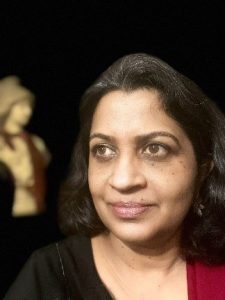
By Natasha Ramarathnam

Every year around Women’s Day, people suddenly discover the women who played an important role in history. Depending on their political ideology, media outlets commission pieces on female rulers or female freedom fighters. While it doesn’t hurt to learn the names of queens like Rani Abbakka Chowta, Ahilyabai Holkar or Rani Chennamma who have been written out of history, by idolising these women, we end up negating the contribution of the ordinary women.
The traditional image of an Indian woman is of someone who didn’t step out of the home. She ran the house and managed the family with ruthless efficiency, but tradition dictated that she must never let herself be seen by anyone outside the close family. The presumption is that the Indian woman was barely literate, un-empowered and incapable of articulating an idea which did not directly pertain to domestic affairs. We think that “in the past”, most women kept away from public life, unless their father or husband “allowed” them to step out.
We do know that a handful of women, mostly from a privileged background, actively participated in the Freedom Movement, but their numbers were small. Though Gandhiji had called for women to join the Salt Satyagraha, their participation remained limited, till the Civil Disobedience Movement started and all the leaders of the freedom movement along with tens of thousands of ordinary freedom fighters were imprisoned. It was then that, in the words of Jawaharlal Nehru (as quoted in Discovery of India), that something unexpected happened-
“Most of us menfolk were in prison. And then a remarkable thing happened. Our women came to the front and took charge of the struggle. Women had always been there, of course, but now there was an avalanche of the which took not only the British Government but their own menfolk by surprise. Here were these women, women of the upper or middle classes, leading sheltered lives in their homes-peasant women, working-class women, rich women – pouring out in their tens of thousands in defiance of government order and police lathi. It was not only that display of courage and daring, but what was even more surprising was the organizational power they showed.”
This was the decisive moment when the British Government realised they would not be able to hold India much longer. If women, who till a few years back were in purdah and were not allowed to participate in public life, could come to the forefront to demand freedom, the British realised that sooner or later they would have to leave the country!
Who were these women? Some were wives, mothers, sisters and daughters of prominent freedom fighters. But the majority of them were women who stepped out of home for the first time to fight for independence. These were women who organised ‘prabhat pheris’ where they went around their locality in the morning singing patriotic songs before going back home to cook for the family. They were women who, when their children complained that the police snatched away their tricolour flags, dressed the children in saffron, white and green, the colours of the tricolour will stand out forever. These were women who operated underground printing presses at night, and provided sanctuary to the freedom fighters fleeing from the police. Some even slipped through police lines to deliver messages, or disguised themselves as the wives of freedom fighters to enable them to evade the police.
Unfortunately, once India attained Independence, most of these women withdrew from public life and slipped back into their traditional roles. Over time, their stories were forgotten, and the participation of women in public life, particularly in politics, went back to being disproportionately low. This ensured that reestablishment of patriarchal norms- there are very few laws or policies that promote gender equity and even the few that exist are not implemented in a way that benefits women.
By dedicating a single edition or episode to profiling famous women rulers (or leaders), the media creates the misconception that such women are the exception rather than the norm. If Women’s History Month is used to spread awareness about mass movements where women took the centre stage, it will normalise the participation of women in public life, and will create an environment where women can demand a more equitable role in society.
Natasha Ramarathnam is a dog lover, a tree hugger, a coffee addict and a book dragon. A development sector professional by training and experience, she now spends most of her time working towards gender equity and positive climate change. Her greatest achievement, according to her, has been to bring up two feminist sons.

Join our newsletter to receive updates